In Illinois, Big Money Hasn’t Always Won the Governor’s Race
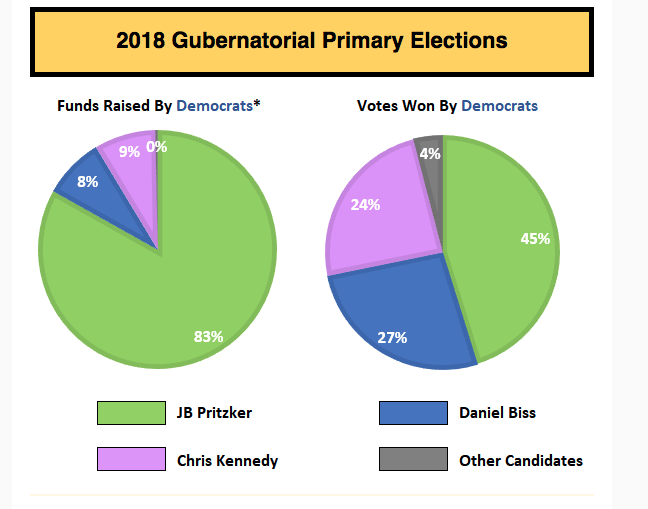
Illinois politics is making national news this year for what could be the most expensive gubernatorial election in U.S. history. The $163 million raised in this year’s race for Illinois governor outpaced the $161 million raised in California in 2010, the current nationwide record-holder for most expensive gubernatorial race.
While the narrative of big money in politics is now pervasive in Illinois, many of the state’s most well-funded candidates are still inching to victory with slim vote margins. This begs the question: do candidates with more money have a clear advantage in Illinois elections? A review of Illinois Gubernatorial Primary Election fundraising and vote totals in 2010, 2014, and 2018 shows an ambivalent relationship between money spent and votes won.
In previous years, Illinois gubernatorial Primary Election candidates boasting large war chests either lost their races, or eked out a small win. This year, both of the most well-funded candidates won their Primaries, but Governor Rauner saw a small margin of victory against GOP challenger Jeanne Ives. The Illinois Governor’s race in the 2018 General Election will serve as another litmus test on the effectiveness of big money in politics and wealthy self-funders seeking statewide office.
Why do some well-funded candidates succeed at the polls while others falter? There is certainly some strategy involved, including how candidates spend their money, and how effectively they campaign against their challengers. The charts below show each candidate’s share of money in Gubernatorial Primary Elections from 2010 – 2018, compared to their share of total votes cast. Winners are marked in green.

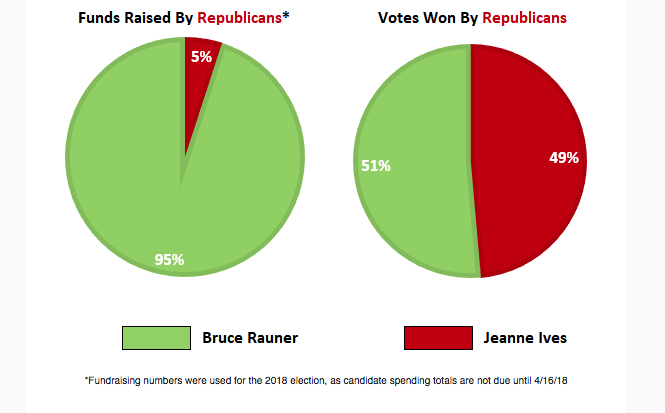
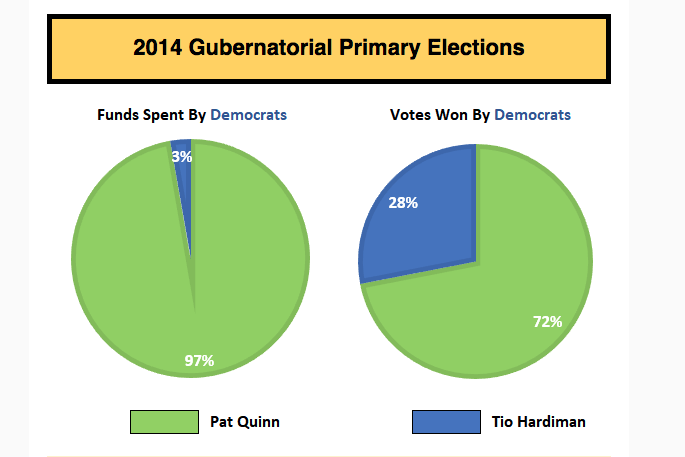
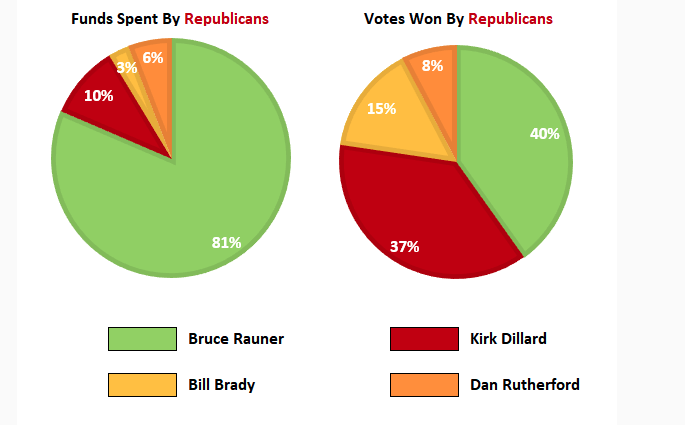
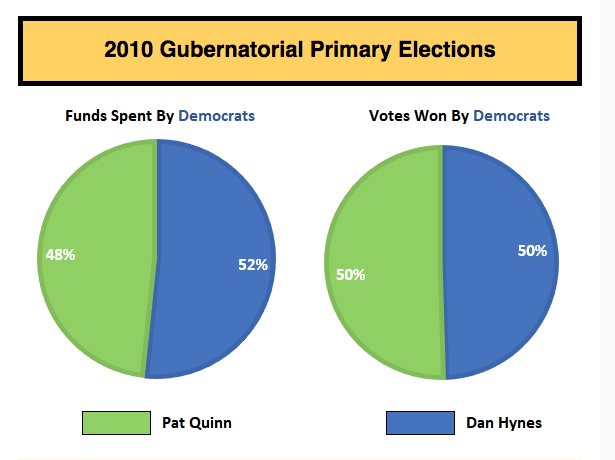
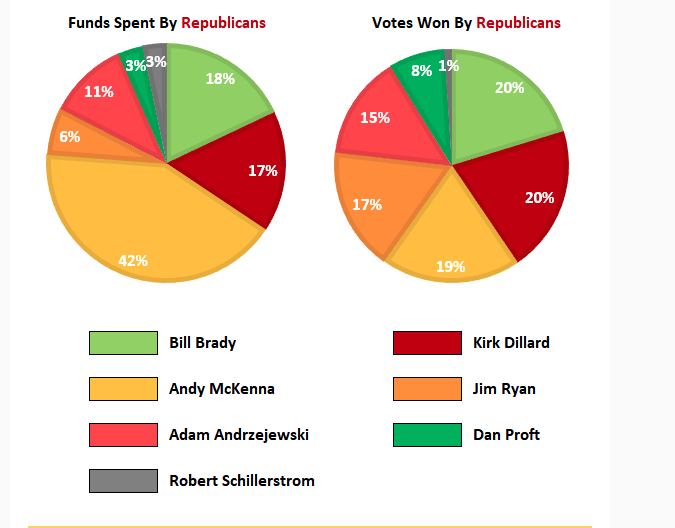
In Illinois, More Money Doesn’t Always Equal Victory
In the 2010 Illinois Gubernatorial Primary, both the Democratic and Republican victors were outspent by their opponents. That seven-way race saw challenger Andy McKenna (R) outspend winner Bill Brady (R) by $3.5 million. McKenna finished third in that race, behind Brady and State Sen. Kirk Dillard. On the Democratic side, Dan Hynes (D) lost to incumbent Gov. Pat Quinn (D) by just over 8,000 votes, despite outspending Quinn by about $500,000.
In 2014, then-candidate Bruce Rauner (R) outspent his collective opponents 4 to 1, and did emerge victorious. However, he saw a slim 3-point vote margin. Similarly, Rauner outraised opponent Jeanne Ives (R) 19 to 1 in the 2018 Primary, and was able to achieve just a 2.8% win over the State Representative.
Democratic candidate JB Pritzker made a stronger showing in the 2018 Gubernatorial Primary with a decisive 20-point win over opponents Chris Kennedy (D) and Daniel Biss (D). Pritzker raised about ten times more than these candidates, and was able to declare victory early on Election Night.
The cost of Illinois elections is steadily on the rise, and is set to break national records. However, all of that campaign spending doesn’t necessarily mean that well-funded candidates are winning by larger margins in Primary Elections, or that they are winning at all.
Back
